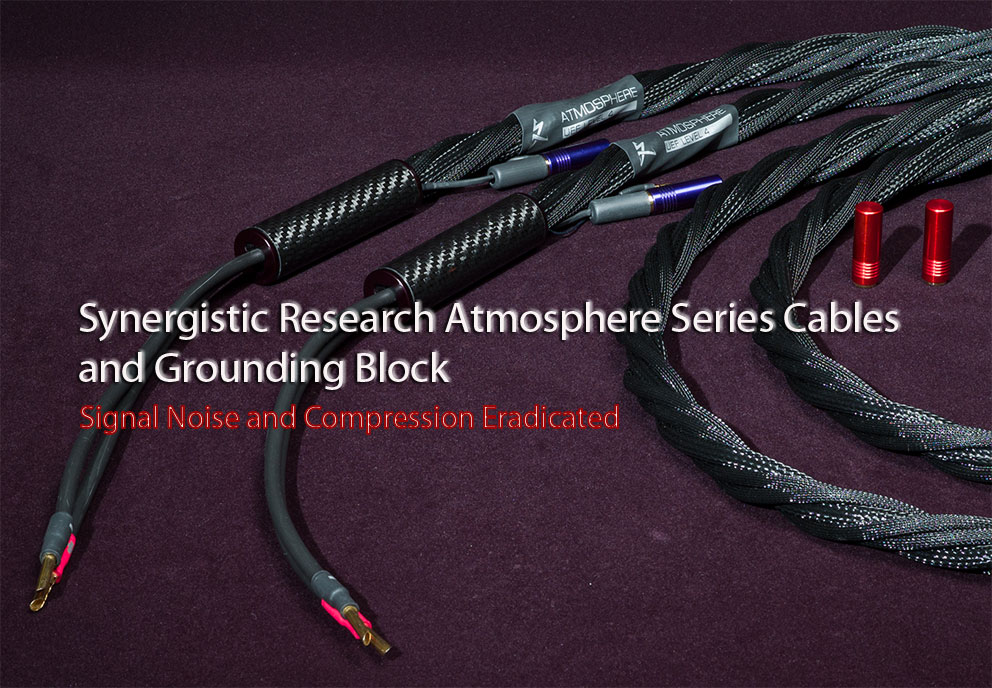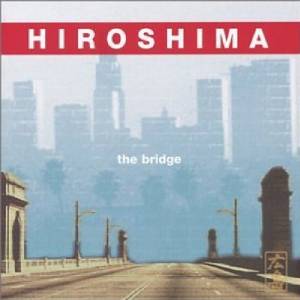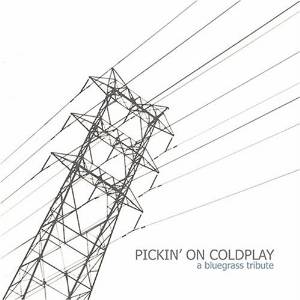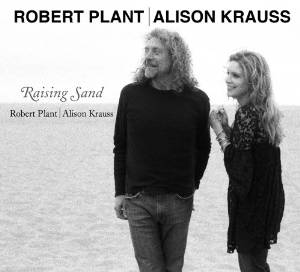Synergistic Research Atmosphere Series Cables and Grounding Block

 Ted Denney, president and lead engineer at Synergistic Research (SR) is constantly developing new products and revamping existing products by carrying over technology conceived for one application in the reproduction of music, applying it in a unique way, and then implementing this new breakthrough in another audio product application. This latest product known as the Atmosphere Series signal cables and Grounding Block, which both employ the Uniform Energy Field (UEF) technology that I have reviewed in some form or another over the past two and half years. SR must be doing something right since they have won numerous “Best of Show” awards when partnering with state-of-the-art system components and have also won Stereo Times’ “Most Wanted Component” awards three years in row. As you will see later in the review of the Level 4 offerings within the Atmosphere Series cables, “past performance is a guarantee of future results.” SR has raised the bar once again.
Ted Denney, president and lead engineer at Synergistic Research (SR) is constantly developing new products and revamping existing products by carrying over technology conceived for one application in the reproduction of music, applying it in a unique way, and then implementing this new breakthrough in another audio product application. This latest product known as the Atmosphere Series signal cables and Grounding Block, which both employ the Uniform Energy Field (UEF) technology that I have reviewed in some form or another over the past two and half years. SR must be doing something right since they have won numerous “Best of Show” awards when partnering with state-of-the-art system components and have also won Stereo Times’ “Most Wanted Component” awards three years in row. As you will see later in the review of the Level 4 offerings within the Atmosphere Series cables, “past performance is a guarantee of future results.” SR has raised the bar once again.

Atmosphere Series Cables
The Atmosphere Series (AS) consists of four levels of non-active interconnects and speaker cables. Level 3 and Level 4 interconnects and speaker cables include “Ground Plane Tuning Modules” (GPTM) that allows one to voice their cables to match their system dependent attributes. Level 4, the highest performance level, includes both RED and BLUE GPTM. The sonic characteristics of each tuning module:
RED: Warmth, Liquidity, Musicality
BLUE: Refinement, Detail, Focus
Another unique feature executed in the design of the Atmosphere Series cables includes UEF Shield Grounding which is used to connect the cable’s shields and noise directly to ground and not through your components power-supplies or speaker crossovers as typically done in all other cables on the market. According to SR, the performance of these cables and other SR products employing the Uniform Energy Field (UEF) (review here, UEF Tuning Circuits and XOT) can be elevated by adding an SR Atmosphere field generator or FEQ (review here).
Each handmade and “quantum tunneled” Level 4 single end interconnect consists a proprietary SR matrix of mono crystal silver conductors with a separate ground conductors from a shield and 99.9999% pure mono crystal silver conductors employing the air sealed dielectric, UEF Ground Plane and UEF Cell Filtration technology resulting in 44 point-to-point hand soldered connections (or 56 point-to-point hand soldered connections for an XLR cable). See the SR website for more information related to cable interconnect cable design.
Each handmade and “quantum tunneled” Level 4 speaker cable consists of a proprietary SR matrix of silver copper conductors with a polyethylene dielectric separate ground conductors from a silver Mylar shield, silver/copper mono crystal conductors with a Teflon dielectric, separate ground conductors from a shield, and Ground Plane technology, and 99.9999% pure mono crystal silver conductors employing the air sealed dielectric resulting in 36 point-to-point hand soldered connections with UEF and ground plane terminations. See the SR website for more information related to speaker cable design.
Having seen and evaluate many different signal cables, the first thing I noticed was the build quality of these cables and the implementation of an external carbon fiber cylinder thought to reduce internal isolated cable vibrations. This is as good as it gets for the mighty dollar.

Grounding Block
The SR Grounding Block (GB) which internally employs the UEF technology allows for 18 ground connections to complete a star grounding scheme for one’s system. The GB is 4” long and 1” width and comes supplied with single ground connection that plugs directly into the wall (plugging into your system’s line conditioner is not recommended). The GB allows star grounding of existing SR products such as the SR Tranquility Base, FEQ, Atmosphere, and Atmosphere cables and your system components themselves. The SR GB includes four 4’ intended for AS interconnects and two 8’ ground wires intended for AS speaker cables.
Other possible ground connections include most analog inputs or outputs, USB inputs or outputs, and chassis ground terminals—including connect to ground terminals on turntables and tone arms.
In this review, I will begin by evaluating the Grounding Block’s performance. After I allowed the GB to settle into my system, later, I will swap in the Atmosphere Series signal cables and compare them to my existing reference interconnect and speaker cables that are two separate runs in biwire retailing over $17K.
No Filter LOL
My reviewing system includes the Laufer Teknik Memory Player 64 (latest software and upgrades), Pioneer bdp-09fd blu ray player, Ayon Audio Triton MKII integrated amplifier fitted with Ayon BT SX KT88 power tubes and Ei signal tubes, Acoustic Zen Crescendo loudspeakers, REL R-528SE subwoofer, Klee Acoustics speaker cables and interconnects, Synergistic Research Tesla LE REL SPEC Subwoofer Reference cable, SR Element power cords, SR PowerCell 10 UEF conditioner,SR FEQ PowerCell Equalizer, SR Tesla Plex SE outlets, SR HFTs, SR Atmosphere, SR ATM, and two SR FEQs, SR UEF XOTs, SR UEF power cable tuning circuits, and SR TQ bases. As for my listening area, its 14.5’ wide, has a 9’ ceiling, and has an open back wall to 1500 sq ft of first floor living area.
Cables are the conduit that carries the music signal from source to amplifier and from amplifier to loudspeakers. Cables should be able to maintain a high resolution of low-level details that brings instruments and vocalists including the space they perform in to life; a neutral tonal balance; a transparency to sources revealing differences in mastering methods/equipment; dynamic expression independent of volume; and should be free of RFI, hum, and other noise source compression. In the past, reviewing cables was a difficult task at best since the differences between cables within the same price range seemed to achieve nearly equal levels of performance with some marginally better in some areas. But in the reference to the new Synergistic Research Atmosphere Level 4 speaker and interconnect cables, it’s the biggest improvement with respect to cable swapping I’ve experienced in over twenty years and easily ranks in the top three component changes.
Be forewarned, these cables require 100 hours of burn-in and settling time to acclimate in one’s system to hear their full potential. In all of my listening tests on both the SR Atmosphere Level 4 speaker and interconnect cables, I preferred the Blue colored UEF tuning module.
 First off, the new Synergistic Research Atmosphere Level 4 speaker cable has an uncanny holographic soundstage. I was most impressed when I listened to the cuts 7 and 8 on Damien Rice’s, O [Vector Recordings/Warner Brothers Inc]. On his debut album, the Irish composer pushes boundaries in several directions of folk genre which revolve around life and love while largely producing the album himself as a home recording. On the seventh cut, “Cheers Darlin” and the eighth cut, “Cold Water” from the album, both pieces demonstrate how well the SR Atmosphere Level 4 speaker cable unlock previously hidden details, dynamic gradations, and harmonic nuances present in the original recording but not nearly as appreciated with the Klee Acoustics Grand Illusion cables (my previous reference). From the opening on cut 7, the percussion, clarinet, and vocal displayed in new sense of transparency in the upper frequencies and midrange and sense of space that I was say was lacking in my previous reference speaker cables. And my son, the lead saxophone player in his college marching band agreed and also commented that the tonal balance of the percussion, piano, clarinet, violin, and cello was spot on in both cuts 7 and 8. While my previous reference was noteworthy in terms of full scale dynamics, the SR Atmosphere cable was better in this area especially when the violin faded in near toward to middle of the cut. On cut 8, the midrange warmth in Lisa Hannigan’s vocal was to die for. The various guitars (acoustic, bass, and electric) played by Damien Rice and Mark Kelley seemed to have more bite and definition with each guitar string resonating in a most believable way.
First off, the new Synergistic Research Atmosphere Level 4 speaker cable has an uncanny holographic soundstage. I was most impressed when I listened to the cuts 7 and 8 on Damien Rice’s, O [Vector Recordings/Warner Brothers Inc]. On his debut album, the Irish composer pushes boundaries in several directions of folk genre which revolve around life and love while largely producing the album himself as a home recording. On the seventh cut, “Cheers Darlin” and the eighth cut, “Cold Water” from the album, both pieces demonstrate how well the SR Atmosphere Level 4 speaker cable unlock previously hidden details, dynamic gradations, and harmonic nuances present in the original recording but not nearly as appreciated with the Klee Acoustics Grand Illusion cables (my previous reference). From the opening on cut 7, the percussion, clarinet, and vocal displayed in new sense of transparency in the upper frequencies and midrange and sense of space that I was say was lacking in my previous reference speaker cables. And my son, the lead saxophone player in his college marching band agreed and also commented that the tonal balance of the percussion, piano, clarinet, violin, and cello was spot on in both cuts 7 and 8. While my previous reference was noteworthy in terms of full scale dynamics, the SR Atmosphere cable was better in this area especially when the violin faded in near toward to middle of the cut. On cut 8, the midrange warmth in Lisa Hannigan’s vocal was to die for. The various guitars (acoustic, bass, and electric) played by Damien Rice and Mark Kelley seemed to have more bite and definition with each guitar string resonating in a most believable way.
When listening to the first cut, Delicate, I heard background noise for the first time that appeared sourced from a carnival in the distance. My wife who doesn’t usually take an interest in Damien Rice and was present in an adjacent room and commented, “Wow, I never heard those carnival sounds in the background, I had to do a double take and to see if something was going on in our backyard.” This is a true testament to the resolution of these cables. The character of the full scale dynamics, the expansive soundstage, the enhanced detail and the holographic imaging confirmed to me that the SR Atmosphere Level 4 speaker cables was more capable in achieving a live performance and made great strides in helping me to appreciate these “overlooked” recordings.
What you don’t hear from the SR Atmosphere cables are stringed instruments losing bits of resonant body and sounding stringy or percussion instruments depleted of their image bloom and sparkle from lack of air and truncation of harmonics. In treble octaves where the music is most expressive and where most wires fall short of the mark, the SR Atmosphere speaker cables exhibit flawless expression in the sibilance range. For instance on these recordings, Lisa Hannigan’s vocal was free distortion and truncated dynamics. I just couldn’t find a flaw in the SR Atmosphere speaker cables.
 Overall the SR Atmosphere Level 4 speaker cables sound like I parked my integrated tube amplifier right next to my AZ Crescendo loudspeakers. On Hiroshima: The Bridge [Heads Up International], a 24-bit/96kHz HDtracks download sounded particularly more transparent. Each player in the ensemble was given his own space with the tone and voice of each instrument shining through with greater clarity. On the more complex recording on this track, the SR Atmosphere speaker cables had knack for unraveling all of the details which brought me closer to what the artists were trying to convey. The male voices sounded more immediate and holographic without turning edgy or forward. The detail in the bass frequencies also stood front and center when compared to my previous reference. To me, these cables eradicated the typical hash and time based distortions heard in other cable offerings, getting you beyond stereo reproduction and closer to a live effect.
Overall the SR Atmosphere Level 4 speaker cables sound like I parked my integrated tube amplifier right next to my AZ Crescendo loudspeakers. On Hiroshima: The Bridge [Heads Up International], a 24-bit/96kHz HDtracks download sounded particularly more transparent. Each player in the ensemble was given his own space with the tone and voice of each instrument shining through with greater clarity. On the more complex recording on this track, the SR Atmosphere speaker cables had knack for unraveling all of the details which brought me closer to what the artists were trying to convey. The male voices sounded more immediate and holographic without turning edgy or forward. The detail in the bass frequencies also stood front and center when compared to my previous reference. To me, these cables eradicated the typical hash and time based distortions heard in other cable offerings, getting you beyond stereo reproduction and closer to a live effect.
 Installing the SR Atmosphere Level 4 balanced interconnect between my Laufer Teknik Memory Player and my Ayon Audio Triton III was a revelation. This was confirmed again when I played “Clocks” and “Spies”, from Pickin’ on ColdPlay: Bluegrass Tribute [CMH Records] through the Laufer Teknik MP64. I’ve listened to this album many times with its bluegrass spin on Cold Plays top hits. The improvement was not subtle by any means. It was like listening to this album for the first time. The SR Atmosphere Level 4 balanced interconnect revealed just how signal restrictive my previous reference really is. The various guitars in this recording had greater bite, depth, detail, and were more natural. Holographic images seemed to emerge from a deep black background with dead silence between cuts. Interestingly, I noticed that the overall volume of my system was increased by 35% without turning the volume knob on the Ayon Audio Triton III integrated amplifier and I could turn up the volume with no noticeable stress or strain. Compared to my previous reference, the soundstage depth was nearly 30% deeper on the SR Atmosphere Level 4 balanced interconnect. My previous reference nearly had unrestrictive dynamics, but the SR Atmosphere Level 4 balanced interconnect soars way above in this respect. I later duplicated the same tests as stated above with the SR Atmosphere Level 4 single ended interconnect connected between my Laufer Teknik Memory Player and my Ayon Audio Triton III and found the single ended version of interconnect to mirror these results. As a whole I could not find a performance flaw in the combination of the SR Atmosphere Level 4 speaker cables and interconnects … this would be a first.
Installing the SR Atmosphere Level 4 balanced interconnect between my Laufer Teknik Memory Player and my Ayon Audio Triton III was a revelation. This was confirmed again when I played “Clocks” and “Spies”, from Pickin’ on ColdPlay: Bluegrass Tribute [CMH Records] through the Laufer Teknik MP64. I’ve listened to this album many times with its bluegrass spin on Cold Plays top hits. The improvement was not subtle by any means. It was like listening to this album for the first time. The SR Atmosphere Level 4 balanced interconnect revealed just how signal restrictive my previous reference really is. The various guitars in this recording had greater bite, depth, detail, and were more natural. Holographic images seemed to emerge from a deep black background with dead silence between cuts. Interestingly, I noticed that the overall volume of my system was increased by 35% without turning the volume knob on the Ayon Audio Triton III integrated amplifier and I could turn up the volume with no noticeable stress or strain. Compared to my previous reference, the soundstage depth was nearly 30% deeper on the SR Atmosphere Level 4 balanced interconnect. My previous reference nearly had unrestrictive dynamics, but the SR Atmosphere Level 4 balanced interconnect soars way above in this respect. I later duplicated the same tests as stated above with the SR Atmosphere Level 4 single ended interconnect connected between my Laufer Teknik Memory Player and my Ayon Audio Triton III and found the single ended version of interconnect to mirror these results. As a whole I could not find a performance flaw in the combination of the SR Atmosphere Level 4 speaker cables and interconnects … this would be a first.
Initially I installed the SR Grounding Block with my previous reference cables, SR Tranquility Base under the LT MP and one SR FEQ. I chose to do this out of simplicity of installation but I also wanted to see if my system with cables sourced from cable manufactures would benefit from this product.
 Robert Plant/Alison Krauss, Raising Sand [Rounder], as an HDtrack 24bit/96kHz download, is one of my go to evaluation recordings. This album is a Grammy-award winning collaboration album by rock singer Robert Plant of Led Zepplin and bluegrass-country singer Alison Krauss. Alison Krauss’s voice has been described as “spellbinding”, “honey-sweet”, “weepy”, “saccharine”, and “haunting”. For starters, the Base sans the SR Grounding Block distinguished itself in the most important area, the midrange. With the Base employed, Alison’s voice was more captivating, sweeter, more natural, and projected more into the room. I’ve always thought my speakers disappeared well but with the Base energized, there was a dramatic reduction in the room/speaker interaction with respect to the soundstage portrayal. I really noticed the reduction in my system’s noise floor. With the lower noise floor, I was able play my system at a much higher volume where previously my system’s sound would start to lose its resolving clarity.
Robert Plant/Alison Krauss, Raising Sand [Rounder], as an HDtrack 24bit/96kHz download, is one of my go to evaluation recordings. This album is a Grammy-award winning collaboration album by rock singer Robert Plant of Led Zepplin and bluegrass-country singer Alison Krauss. Alison Krauss’s voice has been described as “spellbinding”, “honey-sweet”, “weepy”, “saccharine”, and “haunting”. For starters, the Base sans the SR Grounding Block distinguished itself in the most important area, the midrange. With the Base employed, Alison’s voice was more captivating, sweeter, more natural, and projected more into the room. I’ve always thought my speakers disappeared well but with the Base energized, there was a dramatic reduction in the room/speaker interaction with respect to the soundstage portrayal. I really noticed the reduction in my system’s noise floor. With the lower noise floor, I was able play my system at a much higher volume where previously my system’s sound would start to lose its resolving clarity.
Overall each instrument had greater depth (particularly stringed instruments in this album), the frequency extremes were better defined/controlled, transients were articulated more crisply, the surrounding ambience had greater clarity, and the music was more relaxed (and so was I). The improvements conveyed above were magnified when the Base was plugged into the Grounding Block.
Plugging the Atmosphere into the GB proved to be another significant improvement. Instruments and displayed greater presence and projected well into the room with the Atmosphere plugged into the GB. The size and character of the acoustic space was also transformed as compared to when the ground of the Atmosphere was plugged directly into the wall.
When I swapped in the SR Atmosphere Level 4 single balanced interconnect between my Laufer Teknik Memory Player and my Ayon Audio Triton III and connected it to the GB, the answer to all of my volume based high frequency noise issues present on all other balanced cables I have ever tried was solved. It must have been a full moon that night with the stars aligned … the biggest issue with my system since adding the Direct to DAC option (internal DAC) to the LT MP was gone. Because the ground connections are now isolated from my system, this alone convinced me that the SR Grounding Block is a must have component.
Conclusion
I wouldn’t hesitate to recommend these cables and Grounding Bar. The SR Atmosphere signal cables excel in all areas as compared to my previous reference and my previous reference was nominated by multiple members of the ST staff as a Most Wanted Component. A component worthy of the designation, the state of the art and sets the bar much higher in terms of performance vs cost. The new Atmosphere Level 4 signal cables and Ground Bar are my new reference.


Mike Girardi
Atmosphere Level 4, 8ft pair speaker cables, $4995
Atmosphere Level 4, 1m XLR interconnect, $3095
Atmosphere Level 4, 1m RCA interconnect, $2495
Grounding Block, $595
Website: www.synergisticresearch.com
Phone numbers: (800) 578-6489 within US and (949) 476-0000 outside the US
Stereo Times Masthead
Publisher/Founder
Clement Perry
Editor
Dave Thomas
Senior Editors
Frank Alles, Mike Girardi, Russell Lichter, Terry London, Moreno Mitchell, Paul Szabady, Bill Wells, Mike Wright, and Stephen Yan,
Current Contributors
David Abramson, Tim Barrall, Dave Allison, Ron Cook, Lewis Dardick, John Hoffman, Dan Secula, Don Shaulis, Greg Simmons, Eric Teh, Greg Voth, Richard Willie, Ed Van Winkle, Rob Dockery, Richard Doron, and Daveed Turek
Site Management Clement Perry
Ad Designer: Martin Perry






Be the first to comment on: Synergistic Research Atmosphere Series Cables and Grounding Block